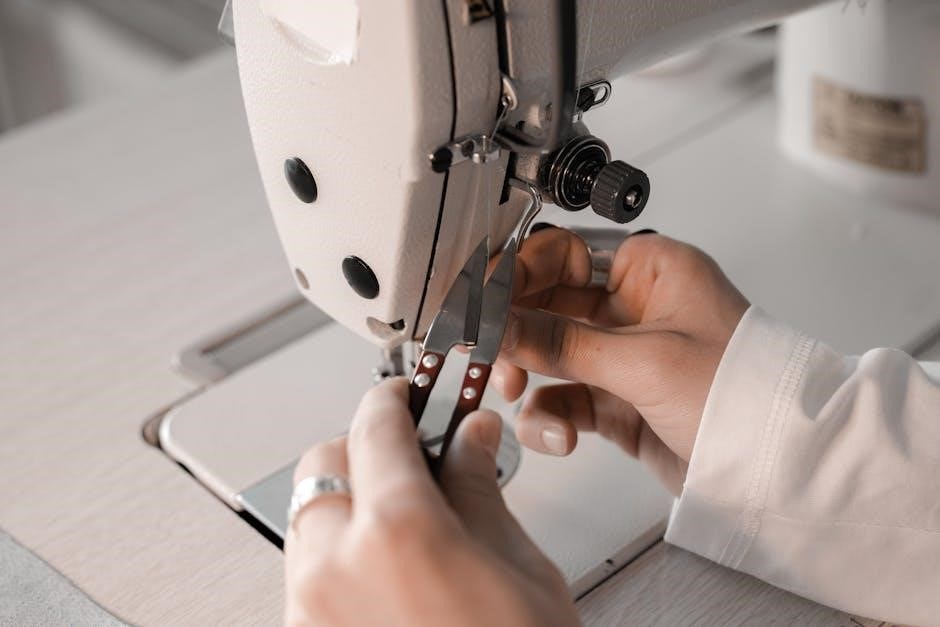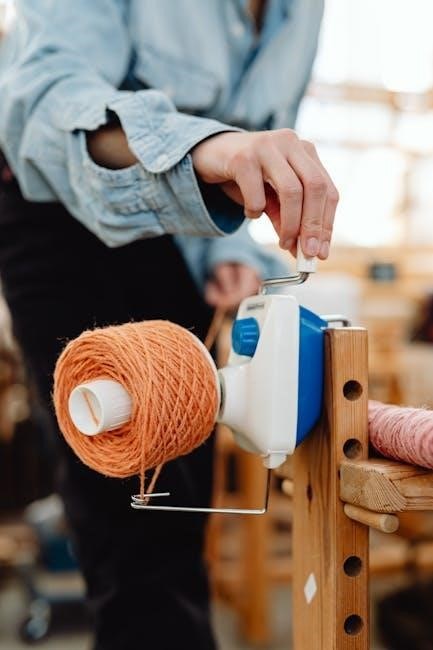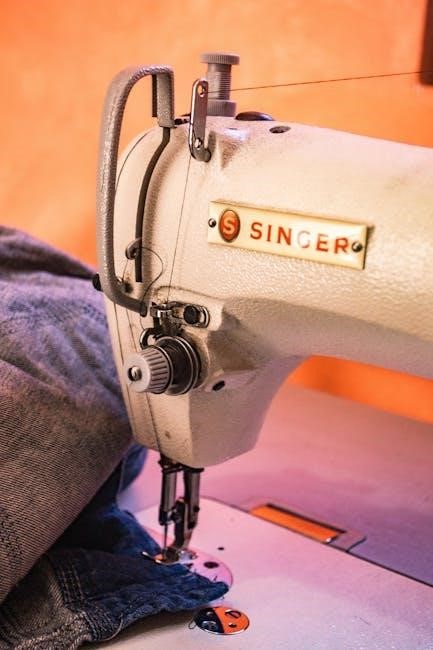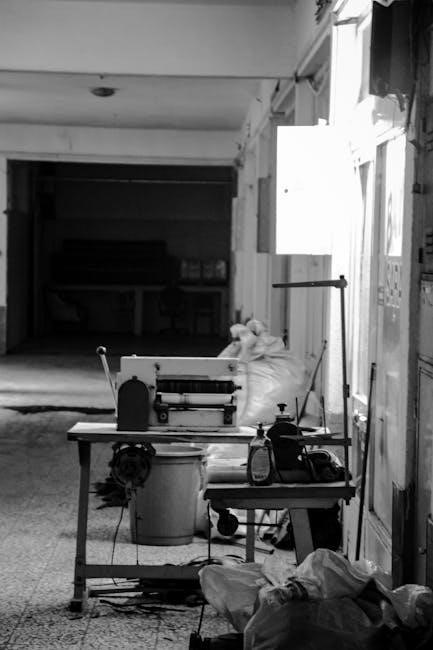Old Sewing Machine Manuals: A Comprehensive Guide
Embark on a journey through time with our comprehensive guide to old sewing machine manuals. These invaluable documents offer insights into the operation, maintenance, and repair of vintage machines. Discover where to find free downloads and physical copies, ensuring your treasured machine sews for years!
Old sewing machine manuals are more than just instruction booklets; they are portals to a bygone era of craftsmanship and ingenuity. These manuals, often overlooked, hold the key to unlocking the full potential of vintage sewing machines, offering guidance on everything from basic threading to complex repairs. Whether you’ve inherited a family heirloom or discovered a treasure at a flea market, a manual is essential for understanding your machine’s unique quirks and capabilities.
This comprehensive guide aims to provide a thorough overview of old sewing machine manuals, exploring their significance, accessibility, and practical applications. We will delve into the resources available for finding free manuals online, as well as options for purchasing physical copies. We’ll also discuss how to identify your sewing machine model, understand the contents of a typical manual, and troubleshoot common problems.
Furthermore, we’ll shed light on the wealth of information contained within these manuals, including threading diagrams, stitch settings, and maintenance procedures. Whether you’re a seasoned seamstress or a novice enthusiast, this guide will empower you to breathe new life into your old sewing machine and preserve a piece of history.
Why Old Sewing Machine Manuals are Important
Old sewing machine manuals are vital for several reasons, extending beyond mere operational instructions. They provide critical insights into the specific mechanics and features of vintage machines, which often differ significantly from modern models. Without a manual, understanding the threading process, stitch settings, and maintenance requirements can be a daunting task, potentially leading to damage or improper use.
These manuals often include detailed diagrams and illustrations that clarify complex procedures, making them accessible to both novice and experienced users. They offer troubleshooting advice, addressing common issues and providing step-by-step solutions to keep your machine running smoothly. Furthermore, old manuals serve as historical documents, offering a glimpse into the manufacturing processes, design aesthetics, and cultural context of their time.
For collectors and enthusiasts, manuals enhance the value and authenticity of their machines. They provide valuable information for restoration projects, ensuring that repairs are carried out correctly and preserving the machine’s original character. In essence, old sewing machine manuals are indispensable tools for anyone seeking to understand, maintain, and appreciate these remarkable pieces of mechanical history. They bridge the gap between past and present, allowing us to continue the legacy of craftsmanship and creativity.
Finding Free Sewing Machine Manuals Online
Locating free sewing machine manuals online can be a rewarding endeavor, offering a wealth of information at no cost. Several websites specialize in hosting digitized versions of vintage manuals, providing access to a vast archive of resources. The International Sewing Machine Collectors’ Society (ISMACS) is a prime destination, offering a curated collection of manuals for various brands and models.
Another valuable resource is the Internet Archive, a digital library that houses a wide range of historical documents, including sewing machine manuals. Websites dedicated to vintage sewing machines often have sections where users can download manuals for free, contributing to a community-driven sharing of knowledge. Additionally, some manufacturers offer free downloads of manuals for older models on their official websites.
When searching online, it’s essential to be specific with your search terms, including the brand and model number of your sewing machine. Once you find a manual, ensure that it matches your machine’s make and model to avoid any discrepancies in instructions. Download the manual in PDF format for easy viewing and printing. By exploring these online resources, you can unlock a treasure trove of information to keep your vintage sewing machine in excellent working condition without spending a fortune.
Where to Buy Physical Copies of Old Sewing Machine Manuals
While digital manuals offer convenience, there’s a certain charm and practicality in owning a physical copy of an old sewing machine manual. Several avenues exist for acquiring these tangible treasures. Online marketplaces like eBay and Etsy are popular destinations, where individual sellers and vintage shops offer original and reproduction manuals.
Specialized sewing machine parts retailers, such as Sewing Parts Online, often stock a wide selection of replacement manuals, including those for antique and vintage machines. These retailers may offer both original manuals and high-quality reproductions, ensuring clarity and durability. Antique shops and flea markets can also be a great place to discover hidden gems, where you might stumble upon an original manual tucked away among other vintage items.
When purchasing a physical copy, consider the manual’s condition and completeness. Look for clear text and diagrams, and ensure all pages are present. Reproduction manuals can be a cost-effective alternative to originals, providing the same essential information in a more accessible format. Whether you seek an authentic original or a reliable reproduction, owning a physical manual offers a tangible connection to the history and functionality of your beloved sewing machine.
Identifying Your Sewing Machine Model
Before embarking on your quest for the correct manual, accurately identifying your sewing machine model is paramount. The model number is typically located on the machine itself, often on a small plate or sticker. Common locations include the base, the side of the machine, or underneath the bobbin case.
Examine the machine carefully, noting any identifying marks, including brand names, model numbers, and serial numbers. If the model number is unclear or partially obscured, try searching online using the brand name and any other distinctive features of the machine. Online sewing machine forums and collector communities can also be valuable resources for identification assistance.
Photographs of your machine can be incredibly helpful when seeking identification from others. Capture clear images of the entire machine, as well as close-ups of any identifying marks or unique features. Once you have gathered as much information as possible, you can begin your search for the appropriate manual with confidence. Accurate identification ensures you obtain the correct manual, providing the specific instructions and guidance needed to properly operate and maintain your sewing machine.
Understanding the Contents of a Typical Manual
A typical old sewing machine manual is a treasure trove of information, providing comprehensive guidance on operating, maintaining, and troubleshooting your vintage machine. These manuals often begin with an introduction to the machine’s features and functions, including labeled diagrams of its various parts.
Detailed instructions on threading the machine, winding the bobbin, and selecting the appropriate stitch settings are usually included. The manual will also cover essential maintenance procedures, such as cleaning, oiling, and adjusting tension. Troubleshooting sections address common issues, offering solutions for problems like skipped stitches, thread breakage, and fabric puckering.
Many manuals also provide guidance on using various attachments, such as buttonholers, zipper feet, and embroidery attachments. Safety precautions are typically outlined to ensure safe operation of the machine. Furthermore, exploded diagrams and parts lists may be included, which can be invaluable when repairing or replacing worn components. By carefully studying the contents of your sewing machine manual, you can gain a thorough understanding of your machine and keep it running smoothly for years to come.
Common Problems Addressed in Manuals
Old sewing machine manuals are indispensable resources for resolving common issues encountered while operating vintage machines. One frequent problem addressed is thread breakage, with manuals offering solutions such as checking the thread path, adjusting tension, and ensuring the needle is correctly inserted and not damaged. Skipped stitches are another common concern, and manuals typically advise on needle size selection, proper threading, and cleaning the bobbin area.

Fabric puckering is often discussed, with recommendations including adjusting tension, using the correct presser foot, and ensuring the fabric is properly fed through the machine. Manuals also address issues like uneven stitches, suggesting adjustments to stitch length and width settings. Bobbin winding problems are frequently covered, with instructions on proper bobbin insertion and tension adjustment.
Additionally, manuals often provide guidance on troubleshooting motor malfunctions, belt slippage, and other mechanical issues. They may include diagrams and step-by-step instructions for basic repairs and maintenance tasks. By consulting the manual, users can often diagnose and resolve common problems, extending the life and functionality of their vintage sewing machines. These resources empower owners to maintain their machines and avoid costly repairs.
Singer Sewing Machine Manuals: A Special Focus
Singer sewing machines hold a special place in the history of sewing, and their manuals are highly sought after by collectors and enthusiasts alike. These manuals provide invaluable information on operating, maintaining, and repairing Singer machines, from the iconic Featherweight to the robust industrial models. Singer manuals often include detailed diagrams, step-by-step instructions, and troubleshooting tips specific to each model.
Many resources are dedicated to preserving and sharing Singer sewing machine manuals. Websites offer free downloads of scanned manuals, while others sell high-quality reproductions. These manuals cover a wide range of topics, including threading, bobbin winding, stitch selection, and basic maintenance procedures. They also provide insights into the unique features and capabilities of different Singer models.
The manuals are essential for anyone seeking to restore or use a vintage Singer sewing machine. They offer a glimpse into the past, showcasing the ingenuity and craftsmanship that made Singer a household name. Whether you’re a seasoned collector or a novice sewer, Singer sewing machine manuals are invaluable resources for understanding and appreciating these classic machines. Their availability ensures that these machines continue to operate for generations.
ISMACS Resources for Manuals
The International Sewing Machine Collectors’ Society (ISMACS) is a vital resource for anyone interested in old sewing machines, including their manuals. ISMACS provides a wealth of information and support for collectors, researchers, and enthusiasts worldwide. Their website features a dedicated section for sewing machine manuals, offering access to a vast collection of digitized documents.
ISMACS’s online manual library includes manuals for various sewing machine brands and models, including rare and obscure machines. These manuals are often contributed by members and volunteers, making the collection constantly growing and evolving. The website offers a user-friendly interface for searching and browsing the manual library, allowing users to quickly find the information they need.
In addition to providing access to manuals, ISMACS also offers guidance on identifying sewing machines, dating machines, and understanding their historical context. The organization hosts regular meetings and events where members can share their knowledge and passion for sewing machines. ISMACS is an invaluable resource for anyone seeking to learn more about old sewing machines and their manuals. Their commitment to preserving and sharing this information ensures that these machines continue to be appreciated and understood for generations to come. They also offer information on attachments.
Manuals for Antique and Treadle Machines
Antique and treadle sewing machines represent a bygone era of craftsmanship and ingenuity. These machines, often dating back to the late 19th and early 20th centuries, were built to last and are still cherished by collectors and enthusiasts today. However, finding information about these machines, including their original manuals, can be challenging.
Manuals for antique and treadle machines are essential for understanding their operation, maintenance, and repair. These manuals often contain detailed diagrams, instructions, and troubleshooting tips that are not available elsewhere. They can also provide valuable insights into the history and design of the machine.
Fortunately, many resources are available for finding manuals for antique and treadle machines. Online archives, such as the International Sewing Machine Collectors’ Society (ISMACS) website and various online forums, offer access to digitized manuals that can be downloaded for free. Additionally, some vendors specialize in selling reproduction manuals for antique and treadle machines. These reproduction manuals are often high-quality scans of the original documents, ensuring that they are legible and accurate.

When using manuals for antique and treadle machines, it is important to remember that these machines may have unique quirks and features that are not found on modern sewing machines. Take the time to study the manual carefully and familiarize yourself with the machine’s operation before attempting any repairs or maintenance.
Using Manuals for Repair and Maintenance

Old sewing machine manuals are indispensable tools for anyone looking to repair and maintain their vintage machines. These manuals offer a wealth of information, including detailed diagrams, step-by-step instructions, and troubleshooting tips, all tailored to the specific model of the sewing machine.
Before attempting any repairs, it’s crucial to consult the manual to understand the machine’s inner workings and identify the correct parts. The manual will guide you through disassembling and reassembling the machine, ensuring that you don’t damage any components or lose any critical pieces.
Manuals also provide invaluable information on routine maintenance tasks, such as cleaning, oiling, and adjusting the tension. Following these instructions will help keep your sewing machine running smoothly and prevent costly repairs down the line. Regular maintenance can extend the life of your machine and ensure optimal performance for years to come.
Furthermore, manuals often include troubleshooting sections that address common problems and offer solutions. From thread breakage to skipped stitches, these sections can help you diagnose and resolve issues quickly and efficiently. By consulting the manual first, you can often avoid unnecessary trips to a repair shop.

When using a manual for repair and maintenance, it’s important to pay attention to the specific model number and year of your sewing machine. Different models may have variations in their design and construction, so using the wrong manual could lead to incorrect repairs or damage to the machine.
Downloading and Printing Manuals in PDF Format
Accessing old sewing machine manuals in PDF format has revolutionized the way enthusiasts and repair professionals maintain vintage machines. The convenience of downloading these documents allows for immediate access to essential information, regardless of location. Many websites offer free or low-cost PDF manuals, making it easier than ever to find the right guide for your specific model.
Before downloading, ensure the manual matches your sewing machine’s make and model to avoid incorrect instructions. Once downloaded, these PDFs can be stored on computers, tablets, or smartphones, providing a readily available resource for troubleshooting and maintenance.
Printing manuals in PDF format offers several advantages. A printed copy can be kept in the workshop, free from concerns about electronic devices getting dirty or damaged. Printing also allows for easy annotation, highlighting key sections, and making personal notes directly on the pages.
When printing, consider using high-quality paper to ensure durability and readability. Adjusting printer settings to optimize image quality can also improve the clarity of diagrams and illustrations. For manuals with numerous pages, consider using a binder or folder to keep the printed pages organized and protected.
Downloading and printing old sewing machine manuals in PDF format combines the convenience of digital access with the practicality of a physical document, making it an ideal solution for anyone seeking to preserve and maintain their vintage sewing machine.